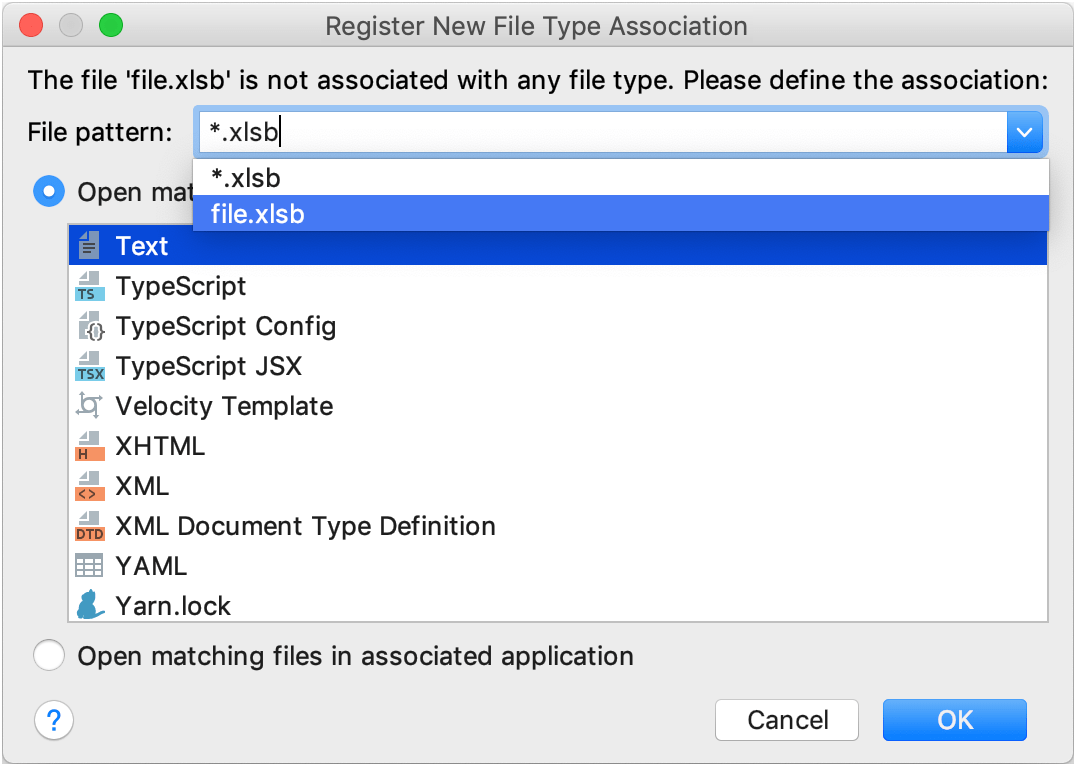Set file type associations
If you're working with file types that are not recognized by MPS (for example, if it's a proprietary file type developed in-house), or if you need to code in an unsupported language, you can create a custom file type.
You can configure how the IDE will parse the files by defining highlighting schemes for keywords, comments, numbers, and so on. You can also associate each file type with an extension to help the IDE identify the files of the custom formats.
Create a new file type
-
In the Settings/Preferences dialog Ctrl+Alt+S, select Editor | File Types.
In the Recognized File Types section, click
 , specify the name of the new type, and provide a description.
, specify the name of the new type, and provide a description. -
In the Syntax Highlighting section, configure case sensitivity, brace matching settings, and specify ways of defining comments:
Line comment: specify characters that indicate the beginning of a single-line comment.
Only at line start: characters that indicate the beginning of a line comment are recognized as a comment if they are located in the beginning of a line.
Block comment start, Block comment end: specify characters that indicate the beginning and the end of a block comment.
Hex prefix: specify characters that indicate that the subsequent value is a hexadecimal number (for example,
0x).Number postfixes: specify characters that indicate which numeric system or unit is used. A postfix is a trailing string of characters (for example,
e-3, kg).Support paired braces, Support paired brackets, Support paired parens, Support string escapes: select these checkboxes to highlight paired braces, brackets, parentheses, and string escapes.
In the Keywords section, you can specify up to four lists of keywords. Keywords of each list will be highlighted differently in the editor and will be auto-completed.
-
The Ignore case checkbox indicates whether the language in files of the custom format is case-sensitive.
Register a new file type association
If you open a file with a registered extension, MPS opens such a file silently in the editor.
If a file type is registered under the Files opened in associated applications category, it's opened in a relevant application. For example, PDF files are opened in the default PDF viewer.
If MPS can't identify a file type, it prompts you to choose whether you want to register it, or open such a file in its associated application.
If the prompt doesn't appear automatically, right-click the necessary file in the Project tool window and select Associate with File Type from the context menu.

Change a file type association
You can associate a file type with another extension or remove an association.
-
In the Settings/Preferences dialog Ctrl+Alt+S, select Editor | File Types.
From the Recognized File Types list, select the file type that you want to associate with another extension.
Use the Registered Patterns section to make the necessary changes. You can add a new extension, remove an existing one, or modify an existing pattern.
Ignore files and folders
In MPS, there's a list of files and folders that are completely excluded from any kind of processing. Out of the box, this list includes temporary files, service files related to version control systems, and so on:
*.hprof;*.pyc;*.pyo;*.rbc;*.yarb;*~;.DS_Store;.git;.hg;.svn;CVS;__pycache__;_svn;vssver.scc;vssver2.scc;